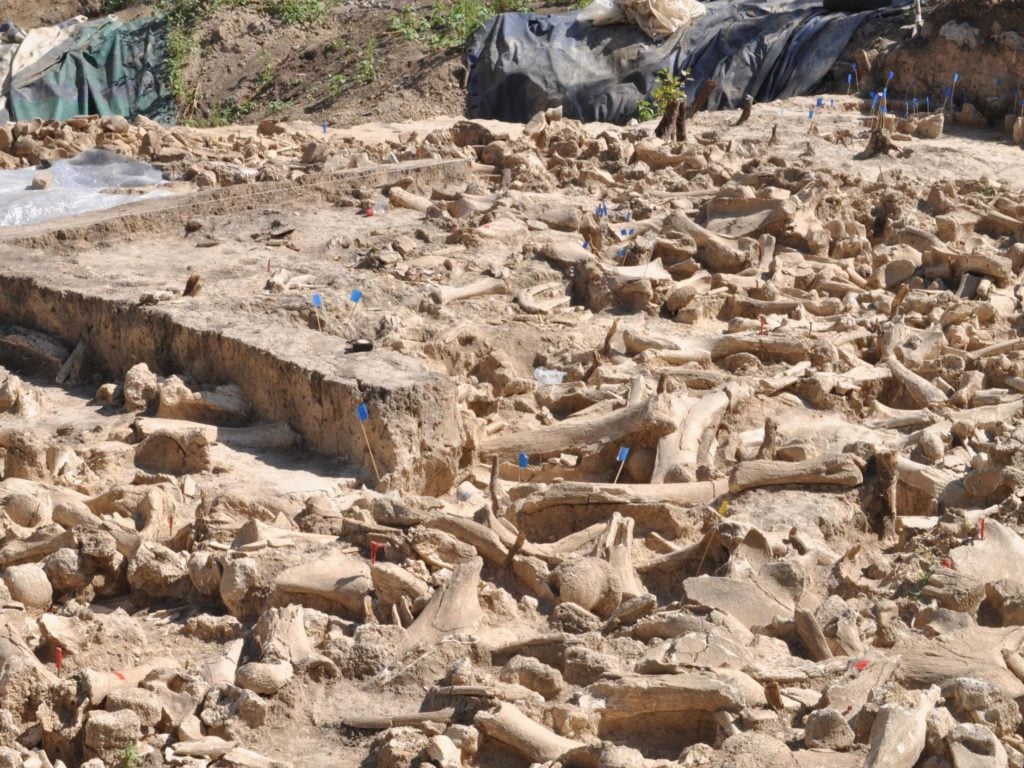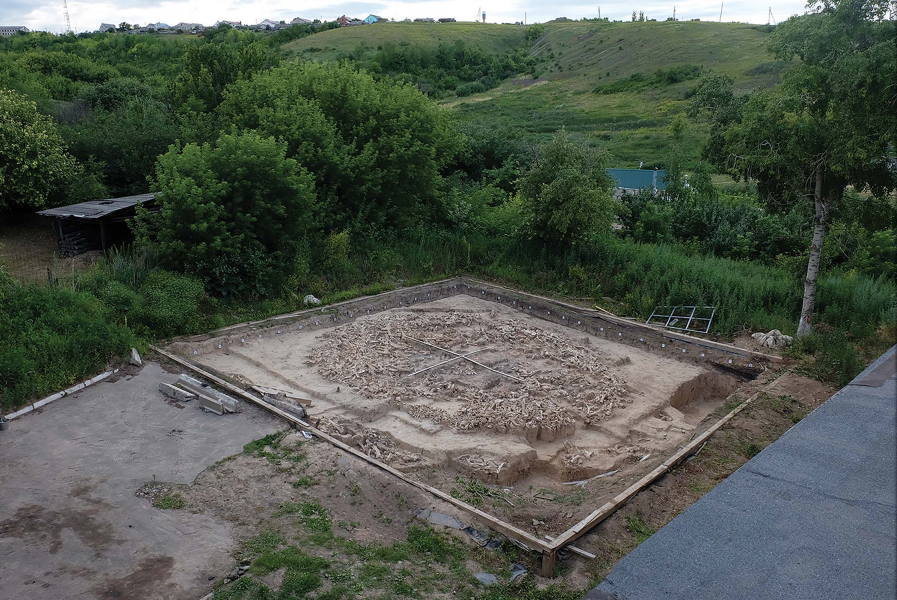Art World
A Mysterious Ice Age Structure Made From the Bones of 60 Wooly Mammoths Has Been Unearthed in Russia
How and why the structure was made continues to baffle scientists.

How and why the structure was made continues to baffle scientists.

Tanner West

A 25,000-year-old Ice Age structure made from the bones of 60 wooly mammoths has been unearthed in Russia.
A team of scientists have been working to excavate the 40-foot-wide circular arrangement of bones at a paleolithic site located some 300 miles south of Moscow since 2014. The structure contains several walls, fire pits, and areas for butchering, according to the findings shared in the journal Antiquity this week.
“The sheer number of bones that our Paleolithic ancestors had sourced from somewhere and brought to this particular location to build this monument is really quite staggering,” Alexander Pryor, an archaeologist at the University of Exeter who co-authored the report, told the New York Times. “It does boggle my mind.”
As many as 70 similarly shaped mammoth structures have been discovered throughout Europe, including two uncovered at the site, Kostenki, in the 1950s and ‘60s. The oldest of these sites date back 22,000 years—3,000 years earlier than the one recently found in Kostenki. They’re also significantly smaller, with most measuring less than 10 feet wide. Researchers believe they were used as modest protective dwellings during the frigid conditions of the ice age.

a 25,000-year-old structure of mammoth bones discovered in Russia. Photo: A.E. Dudin.
Researchers are still struggling to understand why the structure, the oldest and largest of its kind, was made and what it was used for. “Clearly a lot of time and effort went into building this structure so it was obviously important to the people that made it for some reason,” Pryor told Smithsonian Magazine.
Some have suggested it was a site of ritual, but Pryor isn’t so sure. “Ritual,” he says, “is embedded in human lives in all sorts of ways. The fact they might have designed a structure of this type as part of both their ritual and their sustenance activities is very reasonable.”
There is some evidence pointing scientists in the right direction, though. Animal remains, which have consistently been found alongside other mammoth constructions, were not found in the Kostenki bone circle, suggesting it might not have been a place where people stored food or stayed for a lengthy period of time.
Excavators did, however, find vegetable tissue and charcoal from burnt wood—clues that tell us there was plant life nearby, even during the ice age.
Still, the biggest question remains: Where did all these mammoths come from? No place else in the world have so many skeletons from the extinct animal been found in one place. Scientists aren’t sure if the mammoths were killed or found dead, nor do they know how the bodies—which are roughly the same size of elephants—were transported.